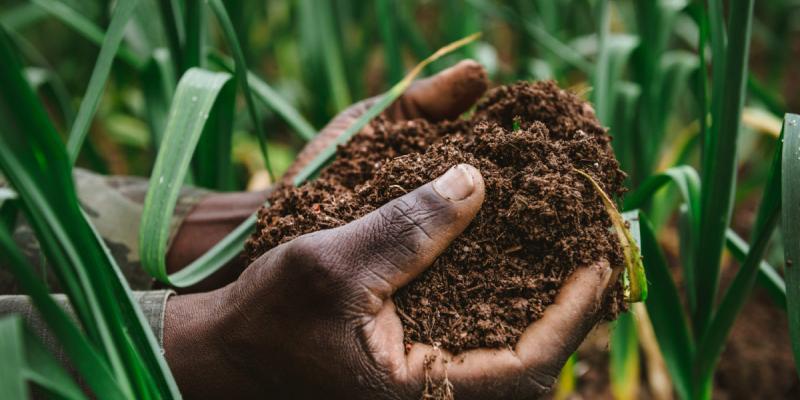Soil Information System Framework included in AfDB TAAT e-catalogue
The Soil Information System (SIS) framework, developed by CABI and ISRIC - World Soil Information, with contributions from the soil data community, has been recently included in the Technologies for African Agricultural Transformation (TAAT) e-catalogue for development partners.
TAAT is an African Development Bank (AfDB) initiative aimed at enhancing agricultural productivity in the African continent by rolling out proven technologies to millions of farmers.
TAAT brings together a consortium of partners to implement these technologies with a focus on:
- Eliminating extreme poverty.
- Ending hunger and malnutrition.
- Turning Africa into a net food exporter.
- Positioning Africa at the forefront of agricultural value chains.
All technologies are vetted and validated by an independent Validation Committee and are listed in e-catalogues. There are separate e-catalogues for private sector, government and development partners.
TAAT seeks to connect public and private sector decision-makers with providers of the best vetted and validated agri-tech solutions for the African continent.
What is the SIS framework?
The SIS framework provides structured guidelines for designing and developing a SIS, incorporating financial, institutional, capacity and technological aspects. It follows a four-phase approach: initiation, planning and design, implementation, and operational.
Each phase includes suggested activities, accompanied by guiding questions, recommended tools, and supporting resources to make the process as practical and user-friendly as possible. These activities are intended as optional, allowing the SIS project team to determine which ones to implement based on their needs.
Who is it for?
The framework is designed to provide guidance for all key individuals and institutions who could be involved in the design and development of a new SIS or in the process of enhancing an existing one. These include SIS owners, system developers, funders, implementing partners and research institutions.
The framework aims to support the global soil data community in effectively planning and developing new national SISs or enhancing existing SIS plans.
The framework, tested and adopted in Ghana and Zambia, is currently being tested in Kenya and Egypt.
Addressing key challenges
SISs often fail once project funding ends due to the absence of sustainable transition plans. Limited technical expertise hinders the development of data-driven products and system maintenance, leaving user needs unmet. Additionally, understanding of target users and use cases remains challenging causing unclear objectives and weak SIS planning. Inconsistent data formats and scattered data storage further complicate data analysis and sharing.
The solution
The SIS framework provides actionable solutions to:
- Understanding the enabling environment of the SIS;
- Co-develop financial sustainability plans to ensure long-term viability.
- Specify the technical capacity needs and identify the roles for SIS design, development, and maintenance.
- Conduct needs assessments for users, beneficiaries, and data producers.
A sustainable future for soil data
The SIS Framework offers a structured pathway to build integrated SISs in Africa, supporting governments and agencies to collect, analyse, and disseminate crucial soil data. By supporting climate resilience (SDG 13) and land restoration (SDG 15), it helps tackle soil degradation, boost agricultural productivity, and foster long-term environmental sustainability.
Collaborations with CABI, ISRIC, and local stakeholders ensure the framework meets regional needs for a resilient and sustainable future.
